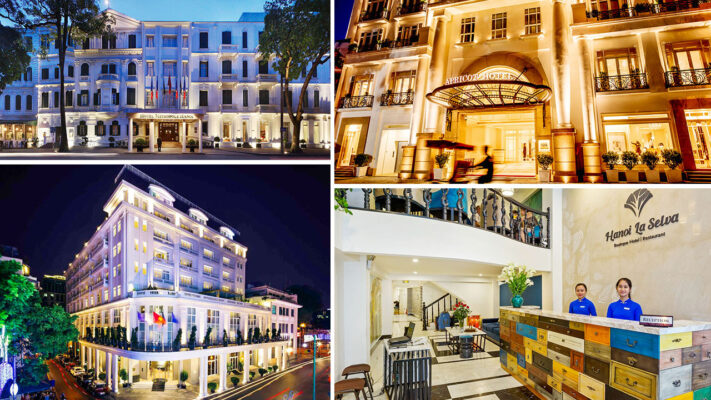#TRENDING
Bach Ma Temple in Hanoi: History, Architecture, Legend & Visitor Guide
Bach Ma Temple is one of the oldest and most revered spiritual sites in Hanoi, Vietnam. This ancient temple blends historical significance, sacred legends, and unique architecture, offering visitors a...
Hanoi Things to See: Top Attractions, Landmarks and Culture
Hanoi, the vibrant capital city of Vietnam, is rich in history, culture, and scenic beauty. With its ancient landmarks, bustling markets, and serene lakes, the city offers a fascinating blend...
Top Best Coffee Shops in Hanoi You Shouldn’t Miss
Cafes in Hanoi are not just about sipping coffee; they’re avenues of heritage, cultural dialogue, and innovative flair. With an explosion of coffee shops lining the streets, each exuding its...
Lan Ong Street: A Hub of Traditional Medicine in Hanoi
Walking through the streets of the Hanoi Old Quarter, one cannot help but be captivated by the unique blend of history, culture, and tradition. Among these historic streets, Lan Ong Street stands out as a...
Bun Cha Hanoi: A Michelin Guide to Hanoi’s iconic dish
When it comes to the culinary heritage of Hanoi, no dish is more emblematic than bun cha Hanoi. This iconic Vietnamese meal, consisting of grilled pork, rice noodles, and a savory, tangy dipping...
Best hotels in Hanoi Old Quarter: From Luxury to Budget
When wandering through the vibrant maze of Hanoi’s Old Quarter, one can easily sense the pulse of history and culture beating in every alley. From its narrow streets bursting with...
Top Things to Do in Hanoi Old Quarter
Hoan Kiem Lake Walking Street: A Cultural Heart of Hanoi
Nestled at the heart of Hanoi, the Hoan Kiem Lake Walking Street emerges as a...
Best Cooking Classes in Hanoi: Discover Vietnamese Cuisine
Hanoi, steeped in history and rich culinary traditions, offers a treasure trove for all cooking...
Christmas in Hanoi: Experience the Best of Festive Charm and Tradition
The end of the year is a magical time in Hanoi, where the festive spirit...
Best Food to Try in Hanoi Old Quarter
Top Best Coffee Shops in Hanoi You Shouldn’t Miss
Cafes in Hanoi are not just about sipping coffee; they’re avenues of heritage, cultural dialogue,...
Bun Cha Hanoi: A Michelin Guide to Hanoi’s iconic dish
When it comes to the culinary heritage of Hanoi, no dish is more emblematic than bun...
Pho Hanoi Michelin: A Culinary Journey Through Hanoi’s Best Pho
Hanoi, the enchanting capital of Vietnam, is renowned for its rich history, vibrant culture, and...
Top Attractions in Hanoi Old Quarter
Bach Ma Temple in Hanoi: History, Architecture, Legend & Visitor Guide
Bach Ma Temple is one of the oldest and most revered spiritual sites in Hanoi,...
Hanoi Things to See: Top Attractions, Landmarks and Culture
Hanoi, the vibrant capital city of Vietnam, is rich in history, culture, and scenic beauty....
Quan Su Pagoda: A Key Religious Site in Hanoi
Quan Su Pagoda, nestled in the heart of Hanoi’s Hoan Kiem District, stands as a...
Where to Stay in Hanoi Old Quarter
Best hotels in Hanoi Old Quarter: From Luxury to Budget
When wandering through the vibrant maze of Hanoi’s Old Quarter, one can easily sense the...
Top 10 Best 5 Star Hotels in Hanoi luxury and class
Hanoi, the vibrant capital city of Vietnam, offers a plethora of luxurious accommodations to cater...
Top 10 Best 4 Star Hotels in Hanoi Old Quarter
Traveling to Hanoi, Vietnam, and looking for the best 4 star hotels in Hanoi Old...





















